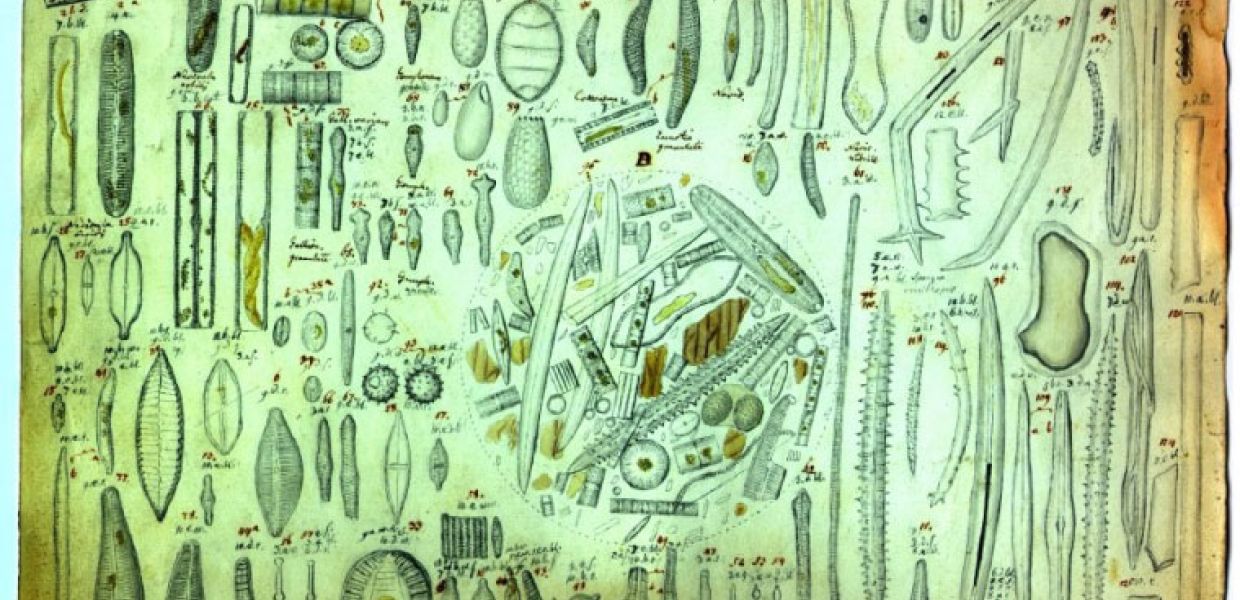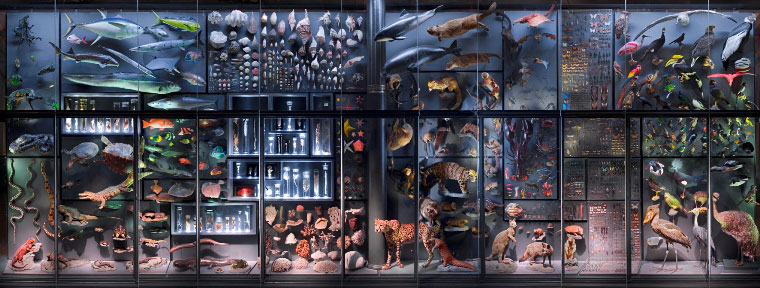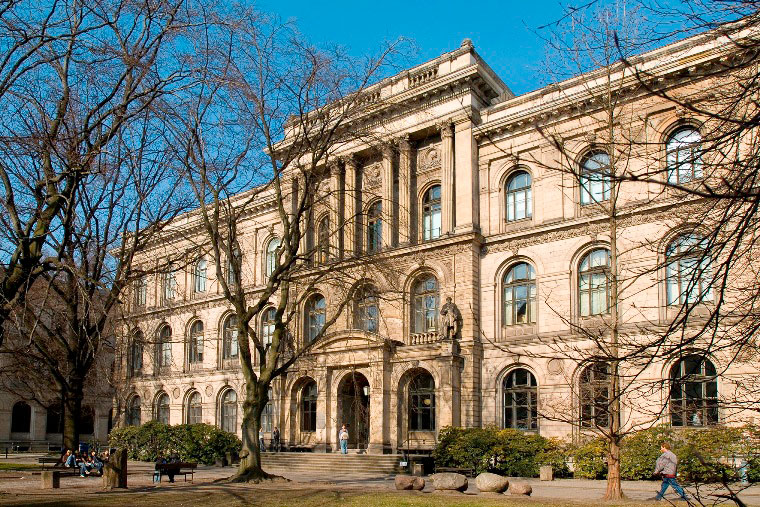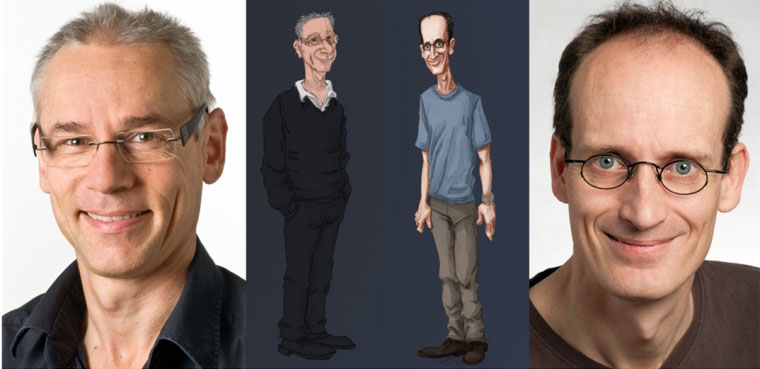Introducing the Museum für Naturkunde in Berlin

An interview with Ulrike Sturm, scientist at the Museum für Naturkunde in Berlin.
Tell us about the Museum für Naturkunde.
The Museum für Naturkunde – Leibniz Institute for Research on Evolution and Biodiversity (MfN) is a research museum within the Leibniz Association. It is one of the most significant research institutions worldwide in biological and geological disciplines and plays are major role in the research on evolution and biodiversity.

Biodiversity Wall in the “Evolution in Action” exhibition (© Museum für Naturkunde Berlin)
The collections of the museum are directly linked to research. They comprise more than 30 million items relating to zoology, paleontology, geology and mineralogy. The collections contain spectacular pieces such as:
- the Berlin specimen of the primeval bird Archaeopteryx lithographica;
- the dinosaurs from the Tendaguru excavation site (including Brachiosaurus brancai);
- the original piece of uranium on which its first scientific description was based.
The large exhibitions in the museum, in particular the new permanent exhibitions, give 500,000 visitors per year an insight into current research. The original research items are on display. The exhibitions are complemented by extensive educational programs for all ages.

The Museum für Naturkunde building in Berlin (© Museum für Naturkunde Berlin)
How are you involved in Europeana Creative?
The MfN is mainly involved in the development of the Natural History Education Pilot. In close collaboration with our project partners Exozet Games and NMP we design a serious adventure game based on Europeana content. We contribute specific content as well as our educational and scientific knowledge. Content sourcing in the field of natural history is our second main task in Europeana Creative.
Who at MfN is involved in Europeana Creative?
At the MfN various employees are involved in Europeana Creative. Gregor Hagedorn, Head of the Digital World at MfN, leads the project at MfN. Ulrike Sturm, scientist, coordinates the project at MfN and is responsible for the educational and scientific concept. Curators and museum educators support the pilot with their knowledge and advice. Oliver Coleman, curator of the collections crustacea and protozoa, and Jason Dunlop, curator of the collections arachnida and myriapoda, appear as non-playing character in the game. Mareike Hirschfeld, former coordinator within the successfully finished project OpenUp! is active in content sourcing for creative re-use.

Dr. Ch. Oliver Coleman (left) and Dr. Jason Dunlop (right) appears as a character in the game (photos, left and right: © Museum für Naturkunde Berlin; graphics, center: © Exozet Games)
Which content are you providing to Europeana and what is your aim to do so?
Digitised content of several important zoological, paleontological and mineralogical collections were mobilised during the OpenUp! project and are already available at Europeana.
A selection of available collections:
- 2,362 images of the butterfly collection
- 11,014 sounds of the animal sound archive
- 3,555 drawings of the famous scientist Christian Gottfried Ehrenberg
- 4,991 images of the paleological collections
- 14,789 images of the orthoptera (grasshoppers) collection
Natural history is part of our cultural heritage and it is important that people feel related with both their natural and cultural heritage. By opening digital representations of our collections to the public, we want to help people to engage with nature and discuss issues of nature conservation, biodiversity loss and natural resource depletion.
What is your favourite piece availabe at Europeana?
Actually, I have two favorite pieces at Europeana. The first one is the sound of a red fox (barking of an adult pair; CC BY-NC-ND). The fox is an animal which feels familiar and every child in Europe knows how it looks like. But when I listened to the song “What Does the Fox Say” I realised I was not able to answer the question. Listen to our animal sounds helped me to bridge this gap.
My other favorite piece is one of the Ehrenberg drawings. Christian Gottfried Ehrenberg (1795–1876) was one of the most famous and productive scientists of his days. In a period of almost thirty years Ehrenberg examined samples of water, soil, sediment, rock – nearly all material which might contain living or fossil microscopic organisms – and described thousands of new species. The drawing displays subterranean infusoria (infusoria is an outdated term for tiny aquatic organisms).

Drawing by Christian Gottfried Ehrenberg (CC BY-SA Museum für Naturkunde Berlin)
Who will be interested in the content? What would be your desirable result for the content usage?
Everyone interested in natural history might be interested in our content. Using its data, images or sounds in a didactic way could support educational material and projects. Also the content could be interesting to cultural and creative industries like designer or game industries. I wish for a re-use in unexpected ways and fields which encourage new audiences to explore their surrounding and to come closer to nature.
